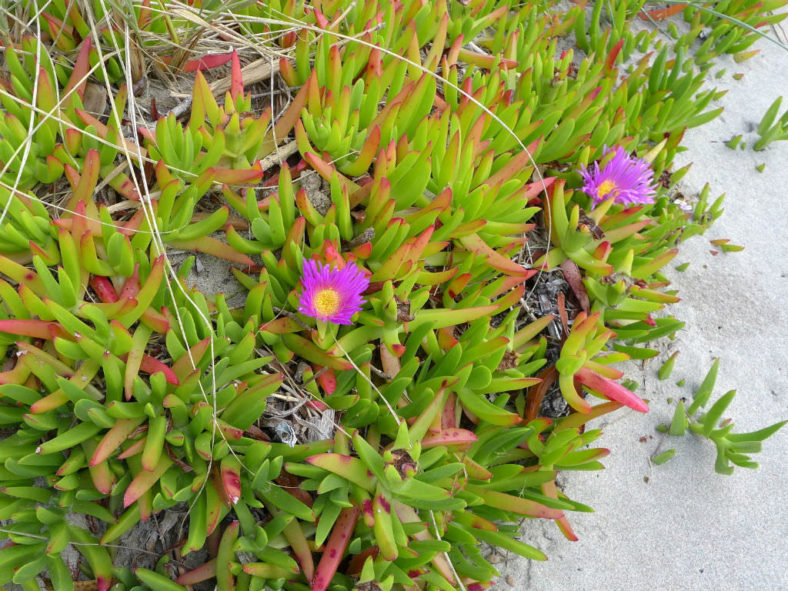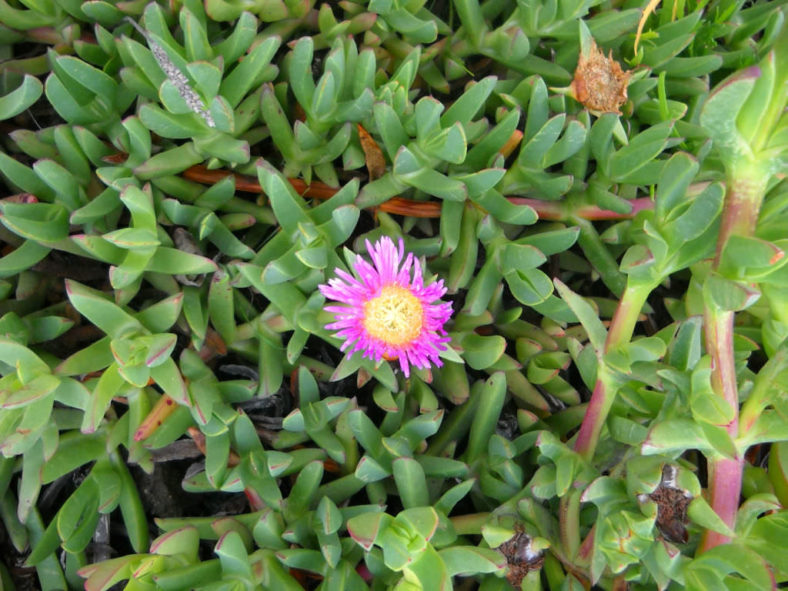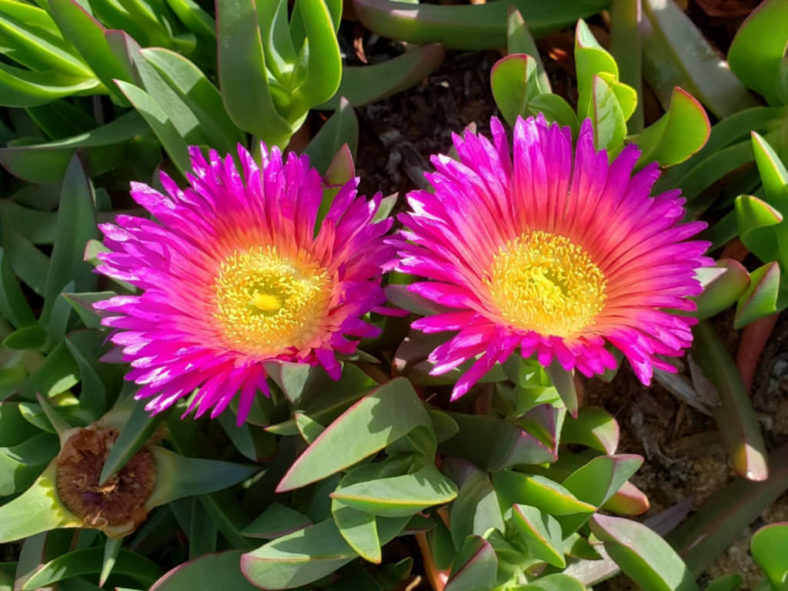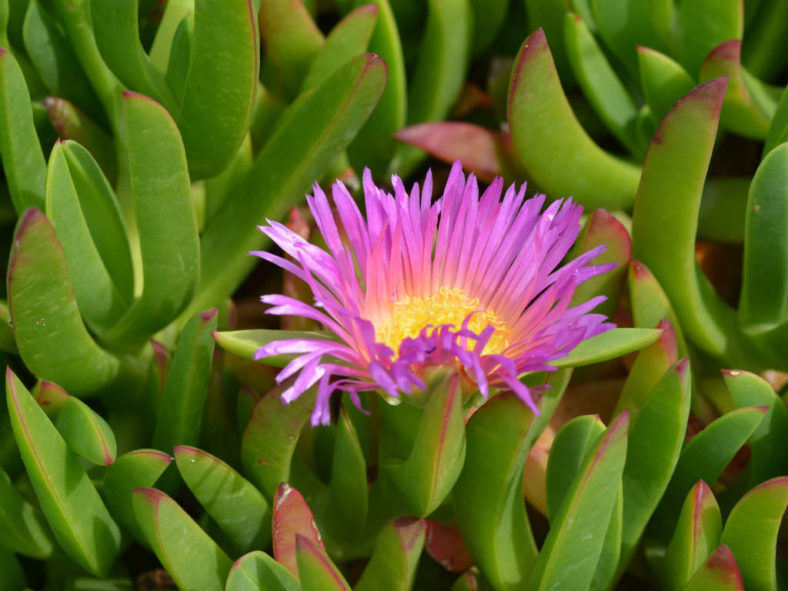Scientific Name
Carpobrotus chilensis (Molina) N.E.Br.
Common Name(s)
Chilean Sea Fig, Sea Fig, Chilean Ice Plant
Synonym(s)
Carpobrotus aequilateralus, Mesembryanthemum chilense
Scientific Classification
Family: Aizoaceae
Subfamily: Ruschioideae
Tribe: Ruschieae
Genus: Carpobrotus
Origin
Carpobrotus chilensis is probably native to southern Africa.
Description
Carpobrotus chilensis is an edible succulent with prostrate stems that bear glaucous leaves. The stems can carpet the ground and grow up to 6.6 feet (2 m) long, rooting at the nodes. The leaves are rounded to triangular in cross-section and can measure up to 2.8 inches (7 cm) long and 0.5 inches (1.2 cm) wide.
The rose-magenta flowers appear all year round and can reach up to 2 inches (5 cm) in diameter. They open in the morning and close at night. The fruits are green to yellowish, oval to subglobose, and can grow up to 0.8 inches (2 cm) in diameter.
Carpobrotus chilensis is often mistaken for its larger relative Carpobrotus edulis.

Hardiness
USDA hardiness zones 9a to 11b: from 20 °F (−6.7 °C) to 50 °F (+10 °C).
How to Grow and Care
Carpobrotus plants are notoriously unfussy. As long as their soil drains well, the soil is allowed to dry out between watering, and the plant receives pinching or pruning to keep it in shape, there is little more to be done.
The only serious threats to the plant's health are spittlebugs and some root and stem rots. You can avoid the rot by minimizing overhead watering when the plant will not dry off before nightfall. The bugs will remove themselves if you spray with horticultural soap.
Growing Carpobrotus in containers is ideal; you can overwinter them in temperate regions. Just bring the pot in and water it deeply. Cut back the plant, let it dry out, and languish for the winter in a warm location. In spring, resume regular watering and move the plant to a full-light situation with some protection from burning rays. Gradually reintroduce the plant to temperatures outdoors until it can tolerate a full day outside.
Learn more at How to Grow and Care for Carpobrotus.
Links
- Back to genus Carpobrotus
- Succupedia: Browse succulents by Scientific Name, Common Name, Genus, Family, USDA Hardiness Zone, Origin, or cacti by Genus
Photo Gallery
Click on a photo to see a larger version.


